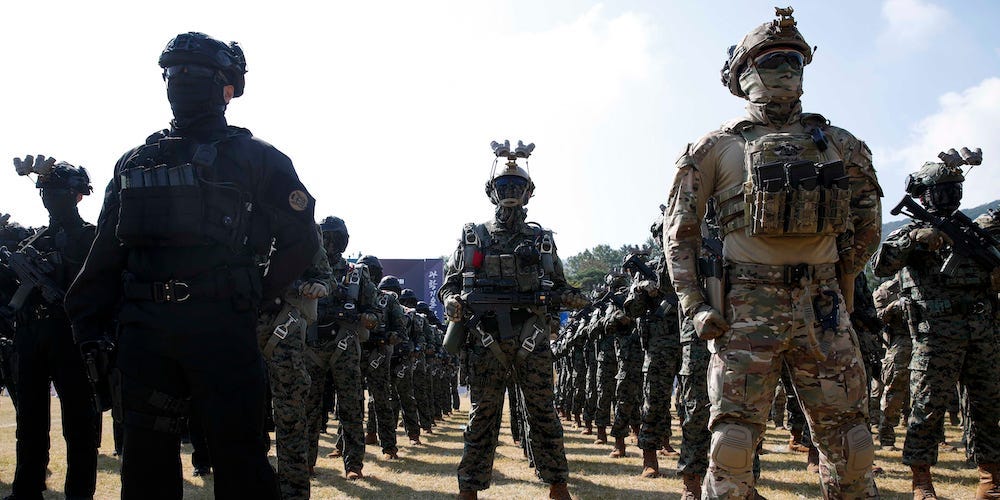South Korea’s military has been forced to remove over 1,300 surveillance cameras from its bases after learning that they could be used to transmit signals to China, South Korean news agency Yonhap reported.
The cameras, which were supplied by a South Korean company, “were found to be designed to be able to transmit recorded footage externally by connecting to a specific Chinese server,” the outlet reported an unnamed military official as saying.
Korean intelligence agencies discovered the cameras’ Chinese origins in July during an examination of military equipment, the outlet said.



Well, they did remove it when they found out. But…
Look. I’m looking at a Thinkpad. Lenovo owns that line now. I dunno if they can push firmware updates to old, pre-Lenovo models, but they can to current versions. Those things are pretty common in a business setting. AFAIK, the US has never raised any issues with Lenovo and security a la Huawei. But if there was an honest-to-God, knock-down, drag-out war, I assume that Beijing is gonna see whether it can leverage anything like that. And I’ve got, what…a microphone? A camera? Network access? Maybe interesting credentials or other things in memory or on my drive? I mean, there are probably things that you could do with that.
Then think of all the personal phones that military people have. Microphone. Camera. Network access and radio. Big fat firmware layer.
My guess is that if you did a really serious audit of even pretty secure environments, you’d find a lot of stuff floating around that’s potentially exploitable, just due to firmware updates. If you exclude firmware updates, then you’re vulnerable to holes that haven’t been patched.
Okay, maybe, for some countries, you can use all domestic manufacturers. I don’t think that South Korea could do that. Maybe the US or China could. But even there, I bet that there are supply chain attacks. I was reading a while back about some guy selling counterfeit Cisco hardware. He set up a bunch of bogus vendors on Amazon. His stuff got into even distribution channels with authorized Cisco partners, made it into US military networks.
https://arstechnica.com/information-technology/2024/05/counterfeit-cisco-gear-ended-up-in-us-military-bases-used-in-combat-operations/
That guy was just trying to make a buck, though I dunno if I’d have trusted his products. But you gotta figure that if that could have happened, there’s room for intelligence agencies to make moves in that space. And that’s the US, which I bet is probably the country most-able to avoid that. Imagine if you’re a much smaller country, need to pull product from somewhere abroad.
China aside, Lenovo has lost all semblance of trust after the whole Superfish debacle. Sure it’s been more than a decade now but their response to that and the fact that it was even approved internally calls a lot into question. I wouldn’t dare go near any of their devices.
TIL, if anyone is curious https://en.wikipedia.org/wiki/Superfish#Lenovo_security_incident
Ok so after a quick read it looks like they bundled some software which allowed third parties to eavesdrop on https traffic with a fairly trivial hack?
I’ve had lenovo laptop’s forever. I could be described as a fan boy. I’d never heard about this. It’s never nice to hear that something you’re a fan of has problems like this.
I guess the only mitigating factor is that it wasn’t intentional on Lenovo’s part.